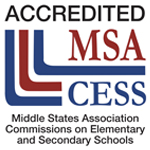Standardized testing can be extremely tough for students of all ages; students are asked to perform their best, and they understand that there are high stakes involved in their performances. It is no wonder that students can feel the oppressive weight of the world on their shoulders come test day, and that weight can impact their performance on the test itself.
One 2016 Doctoral Candidate Study indicated a significant negative relationship between elementary students’ stress levels (as indicated by pulse measurement throughout test-taking) and a down-turn in academic achievement on standardized tests.
Essentially, this shows that a student’s anxiety going into the test can hinder test outcomes and create artificially low scores for even generally high-performing students.

Luckily, there are ways to alleviate this issue and steps that can be taken to help students perform their best on test day. Here are a few ways that you can help your student cope with test anxiety and empower him or her to do his or her best, even in the stressful situation of taking a standardized test.
Extracurricular Support
Non-academic activities that teach and bolster test-related skills can help students be relaxed and ready to do their best on test day. Be warned: some of these activities may seem a bit counter-intuitive to success in academics.
For example, because the PARCC is a computer-based test, hand-eye coordination is a huge component to PARCC success. Those students who often play video games at home, are familiar with computer interfaces, and have experience navigating digital platforms with ease will be more at home in the digital realm on test day and less likely to be anxious because of this interface. They are also more likely to have developed the necessary hand-eye coordination and digital skills to browse through the tests much more easily than their peers with more limited screentime.
The dependence on computer skills is just one reason why, here at Cedar Hill Prep, we focus on achievement tests such as the TerraNova test instead of PARCC. The TerraNova cognitive achievement exam consists of a series of different types of questions: multiple choice, short answer, and long answer questions.
Students who succeed in this test need to have experience working calmly on a single task for long periods of time. To help your student train for this, consider practicing at home with activities like arts and crafts, putting together puzzles, reading together for a set period of time every day, or journaling.
Since the test can take upwards of an hour at any given session, you want to help your student become accustomed to quiet focus while pursuing activities that require critical thinking skills over long periods of time.
Learning to Calm the Anxiety
Test anxiety is endemic among students. According to the American Test Anxieties Association, approximately 36% of students suffer from high or moderately high testing anxiety — affecting an estimated 10 million children in North America.
Luckily, there are methods that can help calm and quell such feelings and prevent them from interfering with your child’s success in a standardized testing environment. Several top psychologists in the field have endorsed anxiety-reducing methods as being key to student mental health and, consequently, student success on standardized tests.
Deep Breathing Exercises
Deep breathing techniques are great for reducing in-the-moment anxiety. Such exercises physiologically combat symptoms of anxiety, teaching students to safely and effectively lower their pulse and increase oxygen to their system. Some psychologists pair these exercises with simple yoga postures to derive maximum benefit from the breathing techniques. This is a great activity to practice at home with your student, and can provide the framework for quality time together in addition to being beneficial to their success on standardized testing.
Visualization & Positive Self-Talk
Visualization and positive self-talk are other powerful tools in your student’s anti-anxiety arsenal. The power of visualization has been proven by a 2005 study at the Richard Stockton College of New Jersey.
In this study, students were guided through a brief visualization exercise before test-taking in order to relax, center, and focus on the task at hand. The students provided with this visualization technique did measurably better on their exams.
Visualization is another skill you can practice with your student at home. Work up a pre-test routine in which they can find calm and balance immediately prior to test-taking. Make certain this routine is familiar and calming, and that your student can effectively self-administer it with ease. You might also consider recording your voice guiding your student through the visualization so that they have a tangible touchstone for the routine when they most need it.
Positive self-talk is a healthy practice not just for test-takingbut for daily life. Sharon Millwood, a consultant for Mooloos Test Day Education, has put together a very useful set of exercises to help teach and explore the power of positive self-talk with your student. Help your student understand how to redirect negative feelings and self doubt, and re-frame them into empowering statements that can help boost confidence and eliminate crippling anxiety.
Practice Makes Perfect
Text anxiety is not a quickly-cured problem, but addressing it with your student can be key to his or her academic success. It takes patience, diligence, and practice to foster the skills that will buttress standardized testing for your student, and many of those skills must be practiced regularly in the student’s home in order to take full effect. Remember, your patience will go a long way towards alleviating their anxiety and removing a major barrier between your student and your student’s future.






